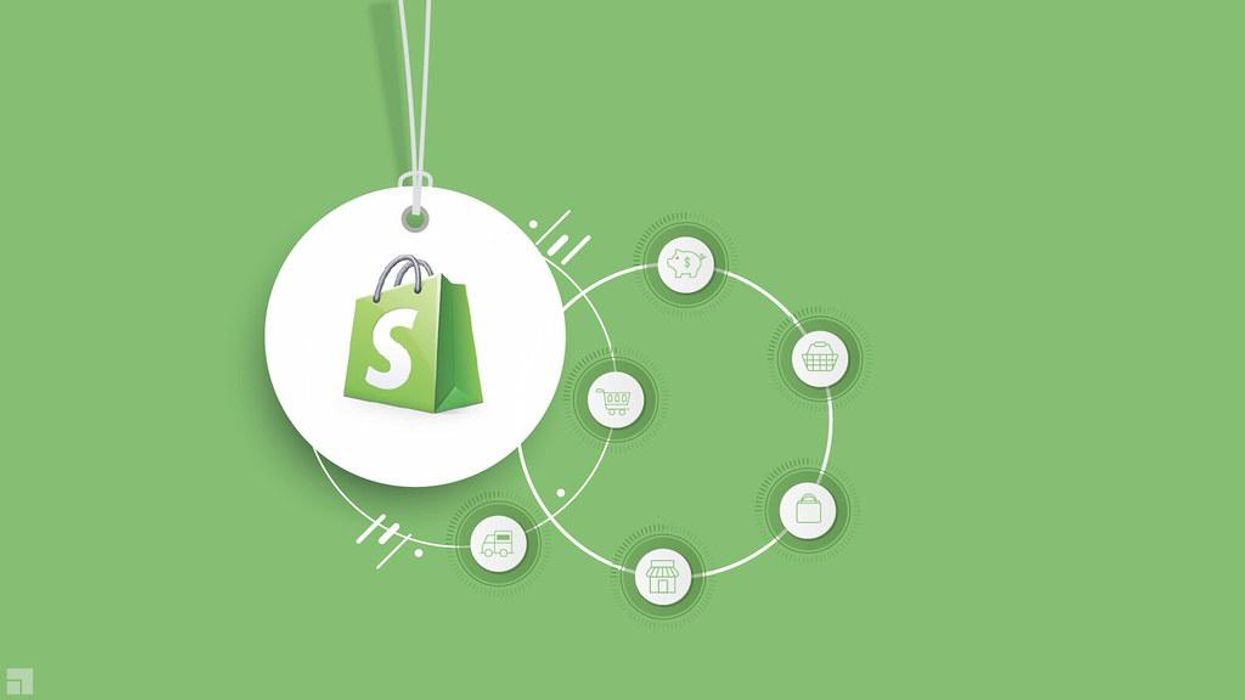Shopify announced a new feature on Tuesday that’s designed to help merchants more effectively find new customers using advertising platforms at a time when it's getting harder and more costly to do so.
Shopify Audiences provides key digital marketing data that has become less freely available following privacy changes made by Apple this year. It works like this:
- Brands choose a product that they want to promote to more potential customers.
- Shopify uses machine learning to build an audience with high purchase intent for the brand.
- The audience is “directly and securely exported” to an advertising network, Shopify wrote, where it can be used to target potential customers.
Attracting new customers is the lifeblood of a consumer brand, and direct-to-consumer businesses rose over a decade by leveraging powerful digital advertising tools from platforms like Facebook to scale.
But this well-trodden advertising route has been getting rockier in recent years. As the number of consumer goods companies went up, ad space on platforms like Facebook became more limited and expensive, driving up customer acquisition costs. At the same time, Apple’s privacy-centered changes that rolled out with iOS 14.5 in April 2021 decreased the number of users opting in to provide the data that powers mobile advertising. Shopify said Audiences aims to address these issues.
“We know that independent merchants may have to pay twice as much to find a new customer as they did a year ago. In fact, one merchant told us their customer acquisition cost climbed 80% over the last year," said Kaz Nejatian, VP of Product at Shopify, in a statement. “We've also seen merchants’ return on ad spend drop, reflecting the growing difficulty of using digital marketing to find new buyers. That’s why we’re launching Shopify Audiences to fix it—without compromising privacy standards.”
Shopify’s new feature aims to provide a key piece of the digital marketing equation: an audience that has a high purchase intent for a product. With data on intent, platforms can target the users that are more likely to buy a product. Shopify is using machine learning to assemble these audiences using its own platform – which has data from its 1.7 million merchants – and tailor them to a merchant. Shopify Audiences “leverages our unique perspective on purchasing intent from supporting merchants and their buyers,” the company wrote in a news release. Then, it exports the audience to a brand’s preferred advertising network, where they can run “look-a-like” campaigns to target people who match the profile of the user lists generated by Audiences.
The company is accounting for privacy with this feature: merchants can opt out of sharing their data, and the company states that Facebook deletes data after it is exported and matched to its records.
Currently available to Shopify Plus members, the feature is currently available for Facebook and Instagram. Meta properties have been important platforms for DTC brands. In turn, Facebook has taken a big hit in digital advertising post-iOS 14.5, reporting earlier this year that the privacy moves would cost the company $10 billion.
At a later date, Shopify plans to make Audiences available for TikTok, Snap, Pinterest, Microsoft Advertising, Criteo, and others.
Shopify said the Audiences feature is designed to help brands increase conversion rates on their ads, and generate better Return on Ad Spend (ROAS).
Seeking to address another area where iOS 14 brought big and challenging changes, Shopify is also looking to provide accurate attribution with the new feature. The company said it would provide measurement at the audience level, rather than at the campaign level.
“Having a transparent attribution model is essential so that merchants can have a high degree of trust about what marketing tactics are driving conversion and deploy their spend accordingly,” Shopify wrote.
Shopify has long offered the tools to help brands set up online stores where shoppers could browse and buy items. Under this model, it was up to brands to turn to platforms like Facebook to attract customers to those websites. Audiences is one sign of Shopify making a move to help brands not only man the store, but go out and get shoppers into it, as well.
Business Insider first reported on the development of the new feature last year, and characterized it as part of a big push into advertising by Shopify.
"I think it's the first step to Shopify building out a much more robust advertising offering for their merchants — it's the low-hanging fruit of interesting data to help better advertise on platforms," an executive told Business Insider at the time.
One outgrowth of the iOS 14.5 shifts was a move by retailers to build out advertising networks on their own platforms. The prior report indicates Audiences might be a building block for Shopify to make a retail media move of its own.
There are questions about where such a network would live on Shopify, as individual brand websites don't offer the same kind of traffic pull that usually leads to advertising. But as Ben Thompson of Stratechery wrote earlier this year, the attribution challenges of the post iOS 14.5-landscape – namely, determining who sees an ad – could present an opportunity:
Here Shopify’s ability to act on behalf of the entire Shopify network provides an opening: instead of being an advertising seller at scale, like Facebook, Shopify the company would become an advertising buyer at scale. Armed with its perfect knowledge of conversions it could run probabilistically-targeted campaigns that are much more precise than anyone else, using every possible parameter available to advertisers on Facebook or anywhere else, and over time build sophisticated cohorts that map to certain types of products and purchase patterns.
To be clear, Shopify hasn't detailed any plans, or addressed whether this is the concept it's building. But it's worth reflecting on the fact that Audiences shows some symmetry with what's presented.
For one, the feature's ability to assemble merchant-specific audiences geared around particular items sounds like it could be at least a step toward building "sophisticated cohorts that map to certain types of products and purchase patterns."
There is also a sign that Shopify views its network as a strength that can be harnessed. In its news release, Shopify writes that Audiences "taps the collective power of our platform so merchants can reach new customers more effectively."
It might be a different approach from where Shopify started, but it would still be arming the rebels.
From Your Site Articles
Related Articles Around the Web












